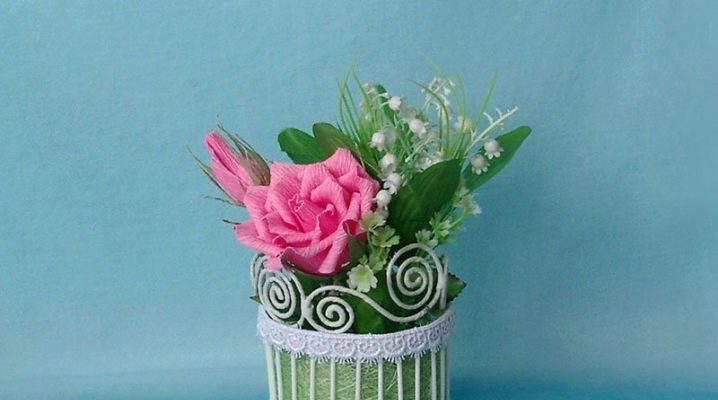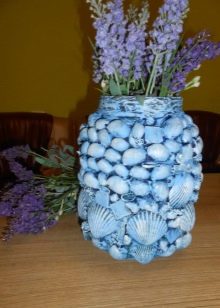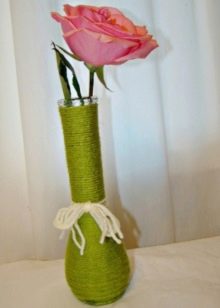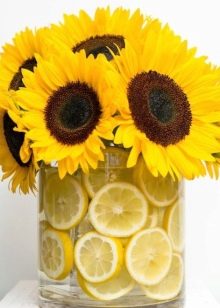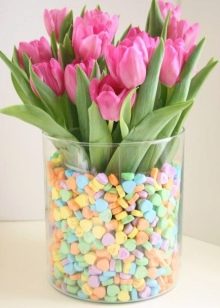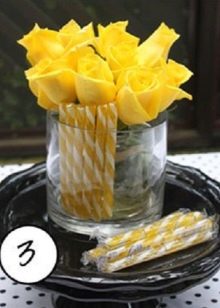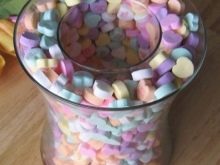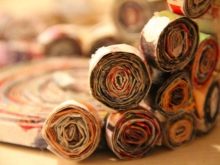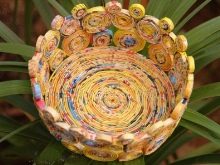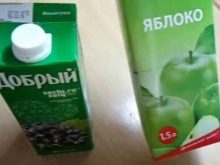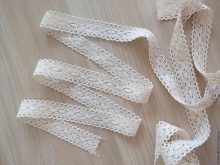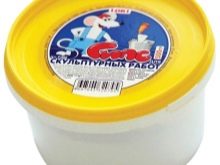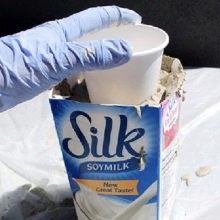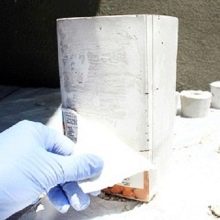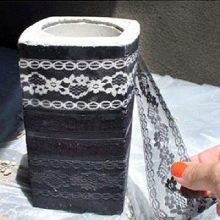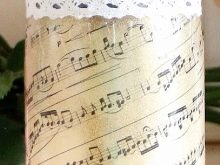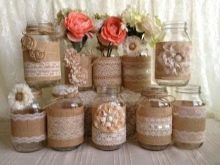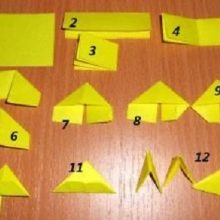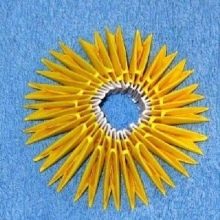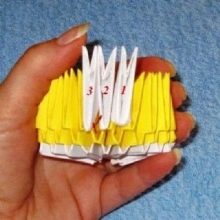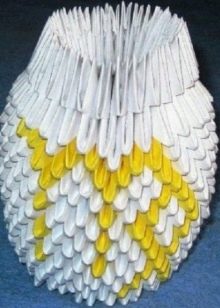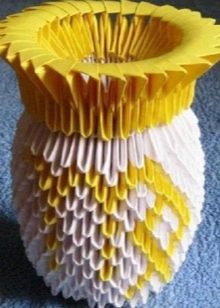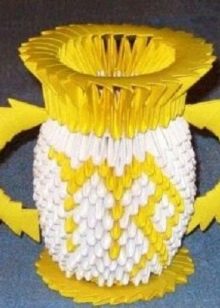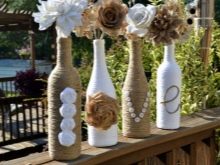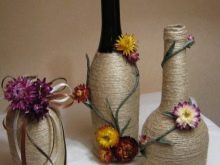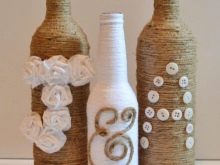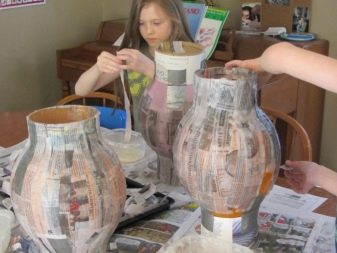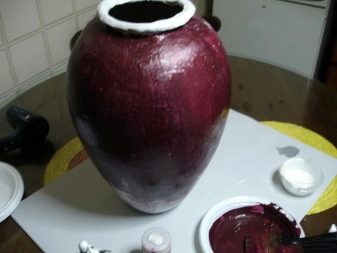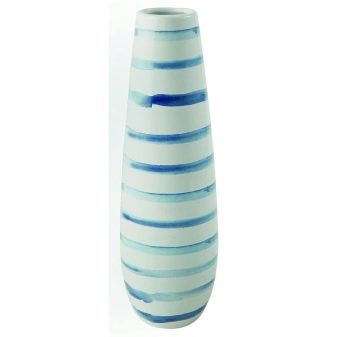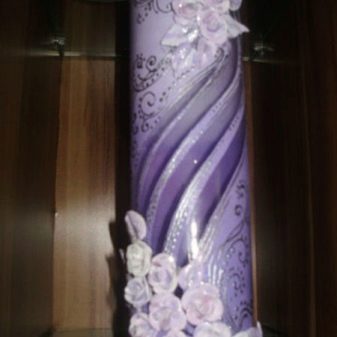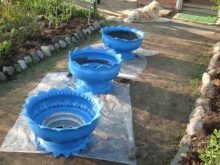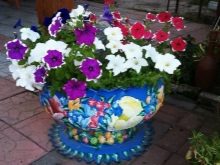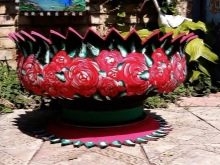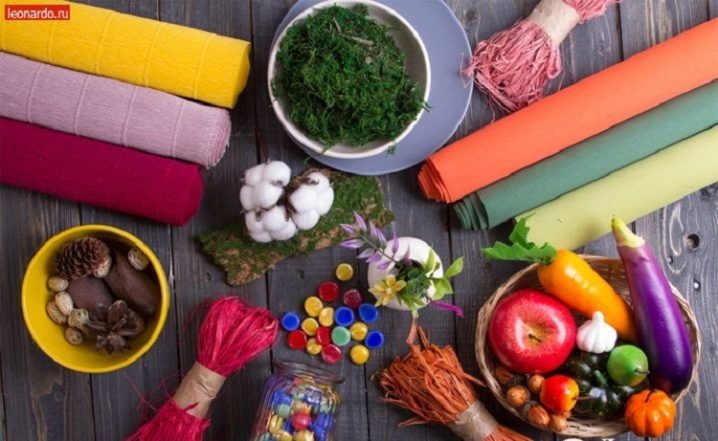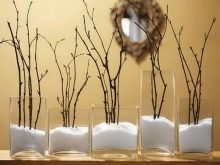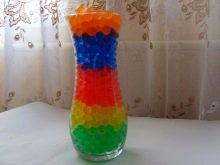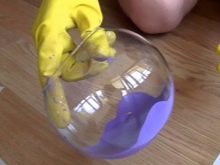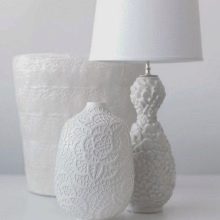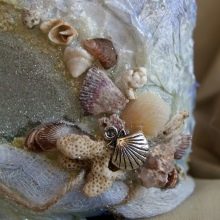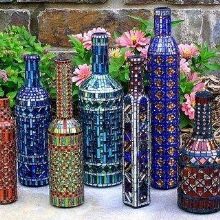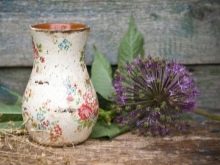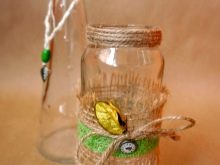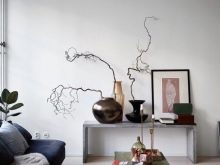How to make a vase with your own hands?
A creative person rarely sits idle. Most of his free time he devotes to needlework. And if he wants to make, say, a vase from scrap materials, he takes up the matter with inspiration. It would seem that such production is fraught with a lot of difficulties and knowledge of the subtleties of the process. However, the material in this article will show how much easier it actually is to perform than it may seem at first glance.
Nuances
The operation of a handmade vase will depend on the materials used to make it. For example, if they withstand moisture, you can put fresh flowers in them. Options that involve the use of products (for example, sliced lemon slices or small multi-colored candies) are thematic for some parties or events.
As a rule, such vases are created for the decoration of the ceremonial table, as well as the room as a whole.
Candies are used instead of orbiz, these vases look stylish, fresh and impressive. With a minimum of expenses for the manufacture and selection of the right stylistic solution, crafts may hint at a certain idea of the existing style.
And if you think out the manufacturing technology, such vases can even be used for beautiful summer and romantic bouquets. And it’s really all ingenious is simple: to reduce the amount of candy used and to be able to pour water inside, it’s enough to put another narrow one in a vase.
Some create a jar or a bottle of paper circles rolled into rolls. Of course, this is rather just a decorative product, however, it will look harmonious in the interior of the dwelling.
Such decor always attracts attention, it stands out against the general background of the interior space.
Plaster and clay vase
The technique of making such a vase is special, since clay items need to be fired. Gypsum is a material that is not resistant to moisture, so this vase can be used only for dried flowers. To make a plaster vase, you will need:
- cardboard box from the juice;
- gypsum;
- brushes;
- lace ribbon;
- glass.
Before starting work, the working area is covered with plastic wrap, since regardless of the accuracy of the work, it will be soiled, and it will be easier to remove the finished vase from the film. Gypsum is kneaded, diluted with water, achieving creamy thickness and uniformity of the mixture. The box is cut from the top, aligning the edge. Plaster is poured into it, and while it is not frozen, a glass is placed there, setting it strictly in the center.
The vase is left to dry completely, after which it is removed from the box and disposed of the glass. The surface is sanded with fine sandpaper. After the lace tape is attached to the front surface, trying to do this as tightly as possible to the plaster. Then over the entire area of the vase is coated with paint using a spray.
After drying, the design of the lace is removed, you can plow some elements or not touch them at all.
Production from a glass jar
It’s easy to make such a product yourself. For this, even a piece of burlap, a coarse rope rope, a note book and beautiful shiny accessories can be useful.The required amount is cut from the piece of cloth, measuring the length and width along the central diameter of the can. Cloth wrapped around the jar, fixing in two places with special glue.
20-30 petals of the same size are cut out of a music notebook and a flower is formed from them. For the middle use shiny accessories round shape. The resulting flower is glued to the junction of linen fabric, closing the joint.
Banks are tied to the neck of the rope thread, tying it with a small bow.
From paper modules
It is necessary to spend more time on the handicraft in the technique of origami, because you first need to prepare all the necessary elements-modules, from which the product will be assembled in the future according to the scheme. Assembling parts is easy using the triangular modules shown in the photo. It is necessary to prepare such elements 433 white and 211 yellow. The first row is formed into a circle of 20 white elements; when they are combined with 20 yellow, a second row is obtained.
For the third row, take yellow (20 pcs.) And turn the resulting circle in the opposite direction. By inserting 30 yellow elements into the pockets of the third row, they form the fourth row.
To be able to increase it by 10 pcs., The first one is worn with the usual method, and the adjacent pockets of the second and third ones are left empty. Next, add the modules of the subsequent rows (from 5th to 16th), using for each row 30 elements and taking into account the chosen tone scheme.
After the 16th row is completed, the 17th row is made white, and then on the 18th unit they are put backwards in relation to the previous row. The penultimate row is the top of the vase, it requires 40 modules, which are put on in the previous elements, adding 10 pieces evenly over the circle. The last row is carried out somewhat differently: one corner of the module is inserted into the left pocket of the second module, the right one into the gap between the elements of the previous row.
The bottom can be made of modules or conventional thick cardboard. If desired, you can add a vase handle.
From the bottle
For the manufacture of vases on the basis of the bottle, you can even use a regular rope thread. She wrapped the product in a circle, trying to lay the thread as tightly as possible to the glued base of the bottle. Glue should be applied special, and it should not be much, because it can affect the appearance (glue should not appear through the thread).
It is possible to use such a product for decorative artificial flowers. If you want creativity, you can decorate the product even with ordinary buttons or the same thread, after dyeing it in a contrasting color, so that it contrasts with the background of the base material.
Papier mache
Making a papier-mâché vase at home is easy if you follow the step-by-step instructions. Inside it can leave a jar or bottle, which will make the product not only decorative, but also functional. You will need a form, old newspapers, white paper, PVA glue, stationery brushes, food film, varnish and gouache.
- The form is wrapped with cling film from the outside.
- The glue is mixed with water in a ratio of 1: 2, the newspaper is torn into pieces and placed in an adhesive solution for impregnation.
- Prepared material tightly pasted over the outer area of the form, covering it with several layers of each previous drying. In this case, the form is pasted over to the limits of reducing its diameter at the top, so that later on papier-mâché can be easily removed.
- After several layers of newspaper are glued and dried, the product is pasted over with white paper, dried and removed from the mold.
- You can make another layer with white paper and leave the future vase to dry for about a day.
- Then it is covered first with gouache and then with varnish.
From high glass
If there is an acrylic paint modeling gel and glitter at home, it will not be difficult to create a unique vase from an ordinary long glass. The manufacture of such a product will take a minimum of time, however, care will be needed: first, it is important to evenly glue the glass surface at regular intervals with small adhesive tape.
Using a sponge, a modeling gel mixed with glitter and paint is applied to the open surface. As soon as the paint is applied, they immediately remove the scotch strips, because it will be difficult to do this later (it can get on with the gel).
Apply a thin layer of paint, if desired, the vase can be decorated with small beads of half-shaped.
From tire
Vases of tires are often used under the garden beds. These are large decorative and, at the same time, functional products for natural flowers and greenery. Someone simply paints the tire and decorates it, considering this option as sufficient. Others prepare the product layout with the stand and start cutting the tire. It is cut with a knife, cutting out the outline of the desired pattern.
In order to simplify the process of cutting, the knife is periodically dipped into the soap solution. After the tire is cut from one side, the rubber is wrapped on the other side.
If desired, this vase can be painted, giving it a more aesthetic appearance. Use such products for decorating the landscape.
The decor of the finished product
The master, who has his own opinion on the use of various objects, almost always produces an effective product. And in the course can go different "accessories", for example:
- dry twigs and cuts of the tree;
- various in a form and size of a cockleshell;
- twine and cotton thread;
- wooden buttons and half beads;
- metal and plastic decor;
- foil and kraft paper;
- colored pencils and outline paints;
- spray dyes and beads;
- satin and organza ribbons;
- decoupage napkins and acrylic glue;
- lace braid and fabric with embossed texture;
- crepe and crepe paper;
- self-adhesive decor and torn pieces of newspaper.
Someone uses stained glass paint for decorating home-made vases, creating unique images on the surface of ordinary glass bottles and cans of various sizes. In this case, often a finished vase is obtained not only beautiful.It is unique, and when taking into account related tones, it successfully fits into the existing interior decor. Others like the eco-decor, so they embody it, sometimes using deliberately curved branches, putting them close to each other or, conversely, interlacing them with each other.
Someone takes the usual vase and focuses on the interior decor. For example, in one case, the most common glass object is filled with branches, orbizami. Sometimes the paint is poured inwards and stretched to the bottom, turning it into a container at different angles, forming waves of different height. Someone likes to give the original texture of the vase.
For example, for this you can draw a special pattern with a relief pattern, which upon further painting will give a unique relief of a vase.
Others prefer to use beautiful lace. Let's say this decoration is done when making plaster or concrete products. While the mass is not frozen, form a pattern, slightly pressing the lace to the base of the pot. Shells are simply pressed in and then painted or left as is. Someone uses mosaic for decorating floor vases, as well as broken pieces of mirrors or wall tiles (it is thinner than analogs for the floor).However, their placement is time consuming and requires maintaining an identical distance between all the elements, which is difficult for a beginner.
What to consider?
Whatever decoration for a vase you would like to use, you need to match it with the existing interior. This can be reflected in lines, shape, color. For example, if for the eco-style wooden decor and branches would be appropriate, modern style needs a different look at the available accessories. The synthetic component, emphasis on simplicity and functionality is welcomed here.
That is why the most common items with no frills here will look more appropriate. Moreover, to create such a vase is not necessarily something ultra-exotic. Sometimes there is enough acrylic paint or even special stickers. In this case, the freshness of the look will play into the hands, inscribing the vase as a harmonious accessory.
Lace, textiles, ribbons, bows - all this is good for areas such as boho, country and Provence.
Loft and grunge do not need any fancy decor: for these areas of design it is much more important that the products are status, look expensive, this is important for the bohemian styles. In this case, you can focus on the shape and choice of paint.
For other modern solutions, you can use glass: Today this material is one of the most sought after in design. He brings a sense of lightness to the interior, fills the space with air. Even a small glass vase can change the perception of space. It is enough for someone to tie a bottle with tape, others prefer to cover part of the surface with glitter, create the effect of antiquity and coating with cracks.
And of course, if you really want to decorate a glass container with cereals and seeds, here you need to understand that such products will not fit into the technological directions of design. However, they look quite nice in the interior of the cottages. Moreover, for decoration, you can simply pour the grain inside the glass containers with layers, alternating, for example, rice, peas and sunflower seeds.
How to make a beautiful vase in the sea style with your own hands, see the next video.
